Bears that outweigh bison, national parks as vast as entire countries, and glaciers larger than some U.S. states—Alaska redefines the meaning of “epic.”
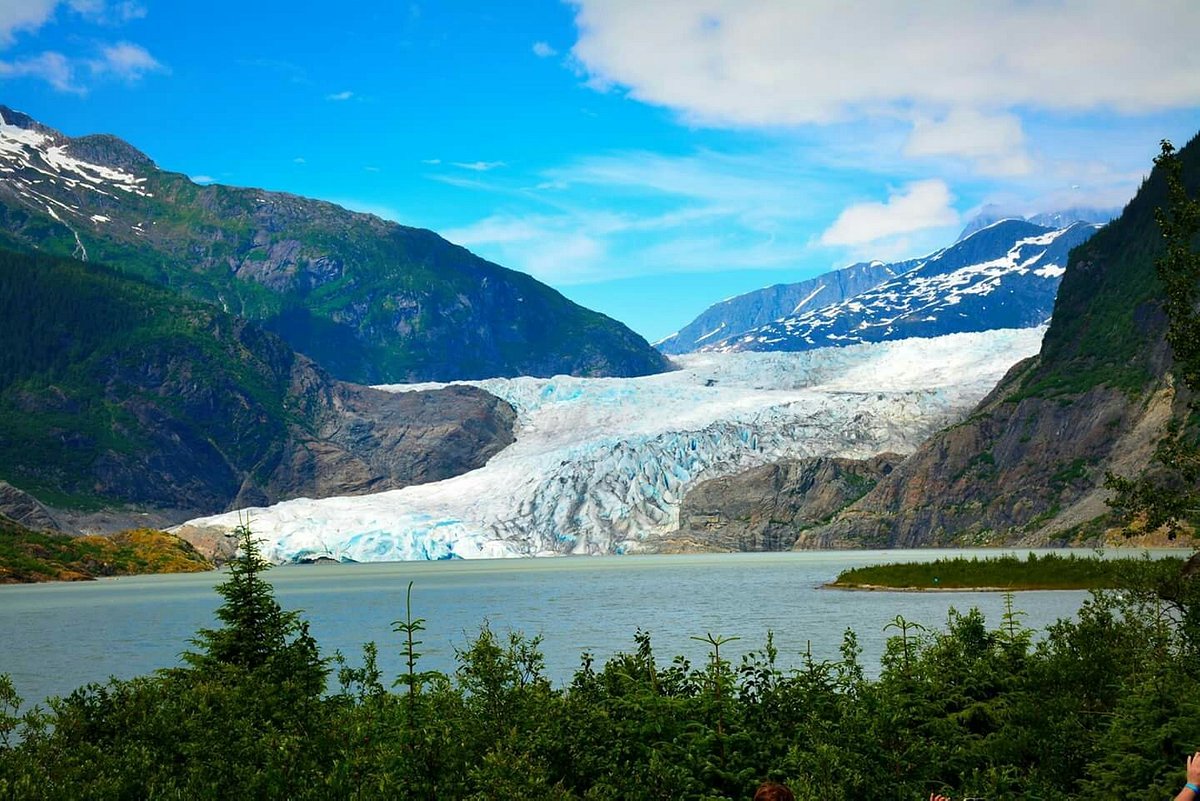
Skipping the Mendenhall Glacier while in Juneau is like visiting Rome and missing the Colosseum. This iconic ice giant is Juneau’s most visited natural wonder, stretching 13 miles from the vast Juneau Icefield to its terminus at Mendenhall Lake—a half-mile-wide wall of ice that sends floating icebergs into the water below. On sunny days, the scene is postcard-perfect, framed by blue skies and snowcapped peaks. On drizzly afternoons, it’s even more dramatic, with the glacier glowing in vivid shades of deep blue.
Is the Glacier Retreating?
Yes, and noticeably so. Naturalists predict that within a few years, the glacier will retreat onto land and may vanish entirely from view at the current observation point within 25 years. The Mendenhall Glacier Visitor Center, located close to the glacier’s face, features interactive exhibits, a model glacier wall, a large-scale relief map of the icefield, spotting scopes for wildlife viewing, and an 11-minute film titled Landscape of Change.
Hiking & Wildlife Viewing
The area surrounding the glacier offers excellent hiking. The short 0.3-mile Photo-Overlook Trail offers great views, while the Nugget Falls Trail leads half a mile to a powerful waterfall spilling into the lake near the glacier’s edge. For wildlife lovers, the Steep Creek Trail is a highlight. This 0.3-mile boardwalk follows a stream with viewing platforms—perfect for watching sockeye and coho salmon spawn from July to September, along with black and brown bears feeding on them. It’s one of the most affordable bear-viewing spots in Southeast Alaska, though summer closures can occur due to high bear activity.
Trek the Glacier
For a truly unforgettable experience, try glacier trekking. Guided by experts, you’ll strap on crampons, grab an ice axe, and hike across ancient ice over 1,000 years old. Above & Beyond Alaska offers the most budget-friendly guided trek, using a hiking trail instead of a costly helicopter to access the glacier. The seven-hour adventure costs $219 per person and includes all mountaineering gear and transport.
Getting There
By car, follow Egan Drive to Mile 9, then turn right onto Mendenhall Loop Road and stay on Glacier Spur Road to the end.
For budget travelers, the Capital Transit bus ($2) is the cheapest option, though it drops you about 1.5 miles from the visitor center. You can walk the rest along a paved path. For a more convenient option, take the ‘blue bus’ run by Mendenhall Glacier Transport/M&M Tours, which departs every 30 minutes from downtown cruise ship docks. The final return trip depends on the cruise schedule.
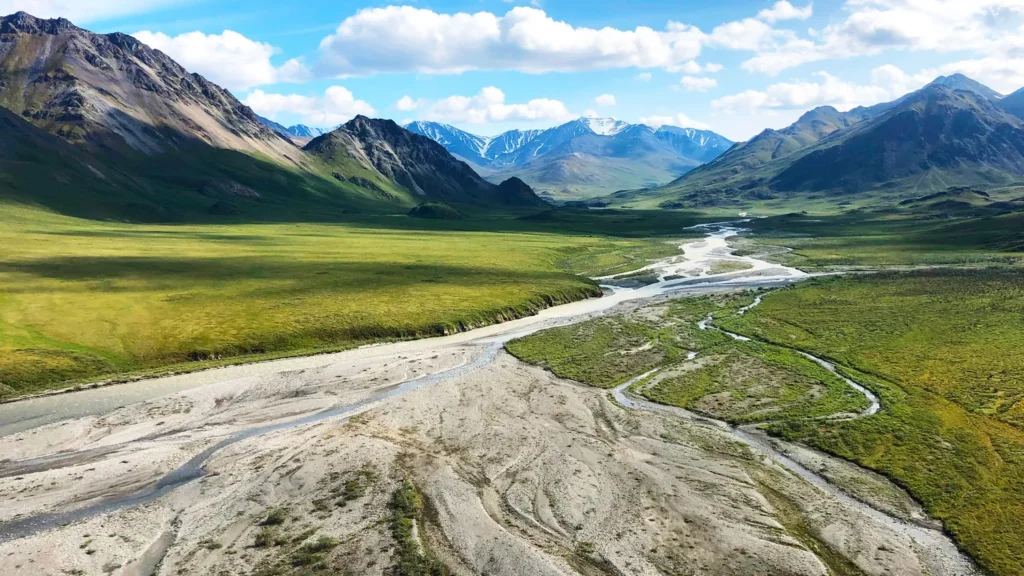
Tucked away in Alaska’s northeast corner, the Arctic National Wildlife Refuge (ANWR) spans an immense 30,625 square miles. This vast, untamed landscape stretches from the windswept, treeless Arctic coast, across the eastern Brooks Range, to the forested Porcupine River Valley.
Wildlife & Wilderness
Visiting ANWR is more than a bucket-list achievement—it’s an immersion into one of the planet’s most untouched ecosystems. Often called the “Serengeti of the North,” the refuge supports a stunning array of wildlife. Grizzly bears, Dall sheep, musk oxen, and North America’s second-largest caribou herd roam freely across the tundra. Over 20 rivers flow through the region—some perfect for multi-day rafting trips—and the Brooks Range’s four tallest peaks rise within its boundaries. For adventurers, photographers, and those drawn to the raw power of nature, few places offer a more compelling call.
How to Get There
Accessing ANWR is a challenge in itself. The only road connection touches the refuge briefly near Atigun Pass on the Dalton Highway. To truly explore the interior, you’ll need to fly in. Charter flights are available—check the refuge’s website or the Public Lands desk at Fairbanks’ Morris Thompson Cultural & Visitors Center for details. Outfitters like Wilderness Alaska offer a wide range of guided trips, including rafting, trekking, and caribou-watching adventures.
Camping in the Refuge
Staying in ANWR is not for the faint of heart. There are no roads, no facilities, and no cell service. Swarms of mosquitoes, limited water sources (many contaminated with giardia), and the presence of bears make this an environment only suited for experienced wilderness campers. Proper bear safety and Leave No Trace camping practices are essential. It’s breathtaking—but only seasoned explorers need apply.
Lodging in Kaktovik
The Iñupiat village of Kaktovik, located on Barter Island in the Beaufort Sea, serves as a northern gateway to ANWR. Roughly 160 miles east of Deadhorse, it’s one of the best places to see polar bears in the wild, particularly in September when they gather near town to feed. For lodging and more information, reach out to the Waldo Arms Hotel in Kaktovik.
The Ongoing Oil Drilling Debate
ANWR has long been at the center of a fierce political and environmental battle over oil exploration. In late 2020, just before leaving office, President Trump approved the sale of drilling leases on the refuge’s coastal plain—a move met with strong opposition from environmental groups concerned about the fragile ecosystem. The Biden administration suspended those leases in 2021 pending a thorough review, offering a temporary reprieve. But the struggle to protect this wilderness is far from over.

Anchorage’s premier cultural destination, this world-class museum stands as the city’s artistic crown jewel. Its striking West Wing, a four-story glass-and-mirrored facade, adds 80,000 square feet to what was already the largest museum in Alaska. The Rasmuson Wing further expands its reach, showcasing artwork from across the circumpolar North.
The museum’s centerpiece is the Smithsonian Arctic Studies Center, home to over 600 Alaska Native artifacts—including tools, masks, artwork, and everyday objects—previously held in Washington, DC. This is the largest collection of its kind in Alaska, surrounded by immersive video displays offering glimpses into contemporary Alaska Native life. Adjacent is the Listening Space, where visitors can hear traditional stories and the natural sounds of Arctic Alaska.
Families will enjoy the Imaginarium Discovery Center, a hands-on science hub for kids that was formerly housed elsewhere downtown. Meanwhile, the original East Wing remains home to important permanent galleries. On the first floor, the Art of the North Gallery features dedicated rooms for Alaskan masters like Eustace Ziegler and Sydney Laurence. Upstairs, the Alaska History Gallery uses life-size dioramas to trace 10,000 years of human life in the region—from ancient subsistence communities to the modern oil era.
Additional highlights include rotating art exhibits, a planetarium, and the interactive KidSpace Gallery, where young children and parents can explore art, science, and history through hands-on play.
With its rich blend of history, culture, science, and art, this is a place where an afternoon can easily turn into a day of discovery.
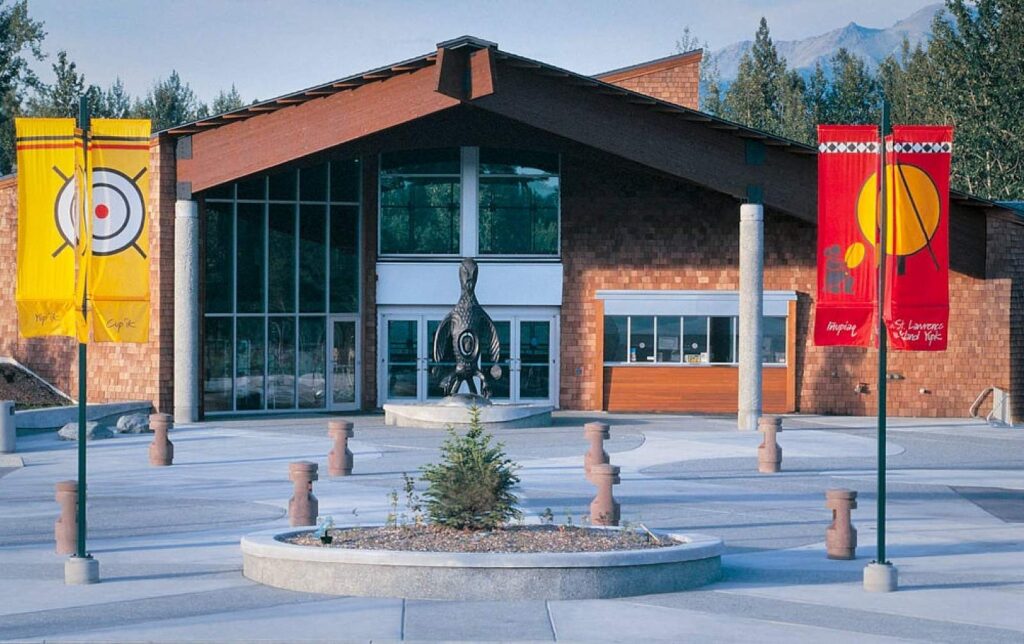
If you can’t journey deep into the Bush to experience Alaska Native culture firsthand, this 26-acre center in Anchorage offers the next best thing. Far more than a museum, the Alaska Native Heritage Center is a vibrant hub of living traditions—a place where language, art, and ancestral knowledge are preserved and celebrated, despite the modern world’s distractions.
Inside the main building, winding exhibits showcase traditional crafts and survival skills, featuring everything from handmade kayaks to rain gear that rivals anything sold at REI. The center also hosts cultural performances, including the once-lost Alaghanak song—painstakingly revived after 50 years through fragments collected from tribal elders.
Step outside and you’ll find a serene lake surrounded by traditional dwellings from Alaska’s major Indigenous groups, including the Aleut, Yupik, and Tlingit. Guides, many of them from Native communities, explain ingenious architectural techniques—like wooden panels that shrink during dry summers to let in air and light, and expand in the damp winters to keep the warmth inside.
Optional experiences such as dog-cart rides, guided tours, and audio tours add to the immersive atmosphere—offering a powerful window into the resilience, creativity, and spirit of Alaska’s First Peoples.

Born from the Exxon Valdez oil spill settlement, this $56-million marine research facility is more than just one of Alaska’s top attractions—it’s a vital center for cold-water marine science, the only one of its kind in the Western Hemisphere. Dedicated to research, education, and the rehabilitation of injured marine animals, the Alaska SeaLife Center offers a rich, hands-on experience that’s both fun and meaningful. Plan to spend a good part of your afternoon here.
Kids will be thrilled by the tidepool touch tank, where they can gently handle sea anemones and starfish, steer a ship’s helm, and marvel at the enormous two-story aquariums featuring seals, seabirds, and more—viewable from both above and below the waterline. Outside, an observation deck overlooks the stunning backdrop of Resurrection Bay, where you can watch salmon battling their way up a fish ladder.
For an unforgettable experience, consider booking an Encounter tour (about $75 per person). These special sessions offer an up-close look at the lives of puffins, octopuses, and marine mammals—taking you beyond the glass for a deeper dive into Alaska’s remarkable marine life.

Housed in a striking building inspired by igloos and the northern lights, this is one of Alaska’s premier museums. Inside, you’ll find rich, artifact-filled exhibits that explore the geology, history, culture, and quirky facts of each region across the state. Upon entry, you’re welcomed by an imposing 8-foot-9, 1,250-pound mounted grizzly bear—just the start of a thoughtfully designed layout that guides you through Alaska’s diverse landscapes, both cultural and geographic.
Upstairs, the Rose Berry Alaska Art Gallery showcases 2,000 years of artistic expression from the North. The collection spans from ancient ivory carvings and wooden masks to powerful contemporary photography, offering a profound look at the region’s evolving creativity.
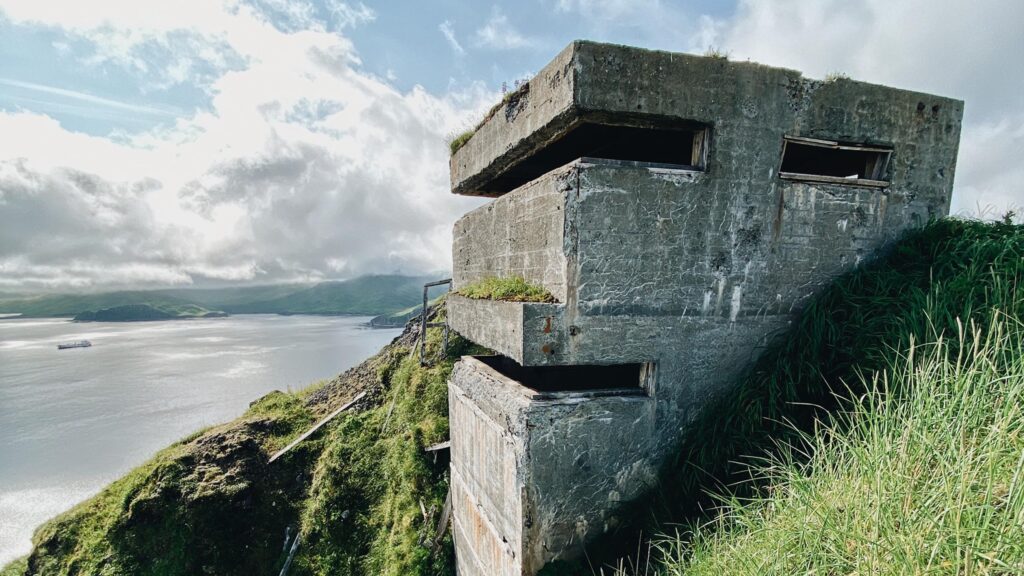
Established by Congress in 1996, this 134-acre national historic area honors the fierce and often overlooked battles fought on the Aleutian Islands during World War II. The centerpiece of the park is Fort Schwatka, perched atop Mt Ballyhoo—the highest coastal battery ever built in the United States. Rising 1,000 feet above the wild waters of the Bering Sea, the fort once housed more than 100 earthquake-resistant concrete structures, including observation posts and command centers, all designed to endure winds up to 100 mph.
Among the best-preserved gun mounts in the country still remain here, along with a network of tunnels and bunkers once used to transport ammunition across the mountain under cover.
Visiting the Site
Located behind the airport, Fort Schwatka is accessible by vehicle or on foot via Ulakta Road, which connects to Ballyhoo Road about half a mile north of the ferry terminal. If hiking, expect an hour-long climb along a gravel road—rewarded by sweeping views of Unalaska Island along the way and at the summit.
Be sure to pick up a free self-guided tour brochure from the visitor center before your visit. Note that a land-use permit from the Ounalashka Corporation is required to enter the site ($6 daily / $15 weekly).
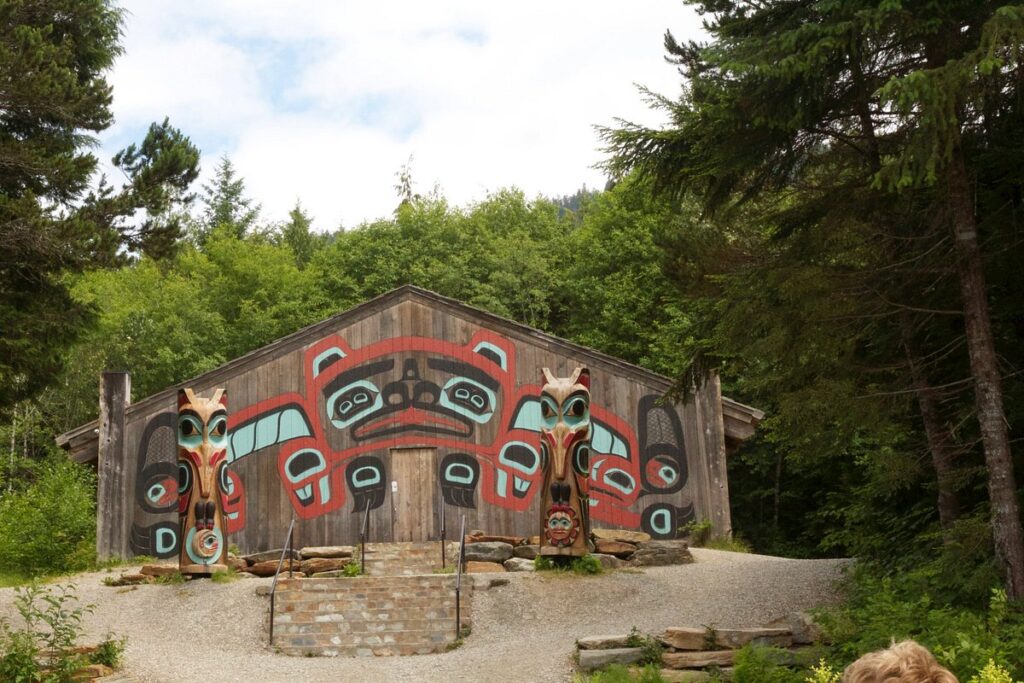
Located just 2.5 miles south of Ketchikan on South Tongass Highway, Saxman is a small but vibrant incorporated Tlingit village with around 475 residents. It’s most famous for Saxman Totem Park, home to 24 towering totem poles that were salvaged from abandoned Southeast Alaska villages and either restored or re-carved in the 1930s.
Among these is a replica of the famous Lincoln Pole, originally carved in 1883 using a photograph of Abraham Lincoln. This pole commemorates the Tlingit people’s first encounter with white settlers. The original can now be seen at the Alaska State Museum in Juneau.
Visitors are welcome to explore the Totem Park on their own, but for a deeper cultural experience, you can book a two-hour, Alaska Native–led village tour (around $32 extra, by appointment). These tours often include a traditional drum-and-dance performance, a narrated walk through the totems, and a visit to the carving shed, where new generations of Native artists continue the tradition. Keep in mind, tours are primarily designed for cruise-ship visitors and can vary in quality, with multiple scheduled daily during peak season.
WhatsApp us